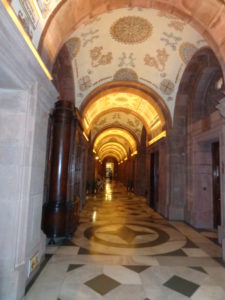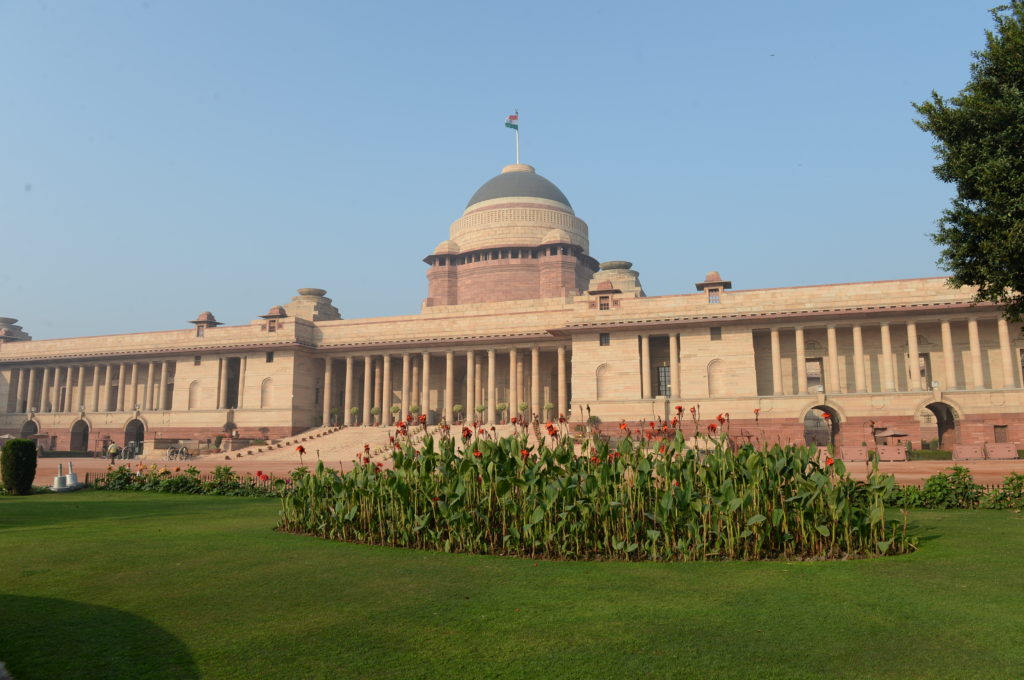Art Treasures of the Rashtrapati Bhavan
(The Presidential Palace of India)
— Article by Shayree Ghosh
(Reading Time: 12 min Approx)
“Why is that room locked? What’s there in it? “This question one of my aunt’s was answered with a slightly exasperated gesture by the guide, who was showing us around the abode of the President of India, at the Rashtrapati Bhavan.
“What do you want to see?”
“What do you mean?”
“Oh well there are so many wings to see, at the Rashtrapati Bhavan, so many things of interest, right from the deer and peacock in the gardens to historic relics Can’t be covered in a day, you see. It’s been over a couple of hours that I’ve been taking you around, and my legs are already weary. It’s my lunch time, too.”

I stifled a smirk. How typical of a middle aged government employee to be so lackadaisical!
“We want to see what’s in that locked room, and then we’ll all take a break for lunch, okay?
“Hmm” said the guide, nodding as he had the mysterious room opened up for us. What we saw enough to stun and bewilder us, amazed. A huge wealth of art work, including original paintings and sculptures lay in stacks and piles carelessly. Works of famous artists both oriental and western were scattered all around.
Who collected all this treasure? We all know Nehru was a lover of art, but who else accumulated it,and who were those who neglected this wealth of art, turning it nearly into ruins?
We Indians are often known to lament how the British took the Kohinoor away,or how other invaders trampled our valuables and temples; but how capable are we, as a nation to value our treasury of artists and art? Even the temples to which we are known to pledge allegiance are in precarious conditions in many cases.
What a paradox that it was a Britisher, David Mccutchion who did the finest research on these temples.What with their donation counters and Pranami rituals, the temples are great earners as money spinners. Yet in most cases, restoration or repair work is done only when the situation gets unavoidable.
Curiously, I noticed that there are no idols of either the Hindu Gods and Goddesses nor any Islamic symbols neither any symbol of Christianity at the Rastrapati Bhavan, radiating a completely secular atmosphere. The only spiritual symbol reigning there was that of one who had reached non- violence and tolerance- The Buddha.
Designed by Edwin Landseer Lutyens in early 1900s, the building atop Raisina Hill became an architectural goldmine and pride for the country. Formerly known as the Viceroy’s House, Rashtrapati Bhavan is an architectural masterpiece. The Rashtrapati Bhavan is now somewhat a microcosm of India, a democracy through and through, providing a home to ideas flora and fauna, from different states, cuisines from different regions too. Thus we relished “ Aluposto” of Bengal (a unique recipe of potatoes with poppy seed and coconut paste ),tandoori chicken of Punjab , Gujarat’s dhokla and other delicacies from different states of India. in one of it’s many dining rooms. Indeed, the number of dining halls are so very numerous at the Rashtrapati Bhavan that once my aunt lost her way in one of the corridors and a guide was needed to show her the way to the dining hall where our dinner was served!
Spread across over 340 rooms and sprawling gardens, the Bhavan can boast of a classical and grand European style with influences of Indian motifs and details interspersed in the structure. Another vivid memory is the guest wing. Since the residential wing was being put up according to the new First Family’s specifications, the First Lady and the others were staying at the guest wing for the transition period. As I greeted the new First Lady, a title claimed after a decade (owing to a bachelor Kalam, and the first woman President), she smiled warmly and greeted me with open arms, asking me to sit on the bed which she lay. “This bed used to belong to Queen Elizabeth.” she murmured . There was no arrogance, no pride in her voice , only the deep affection of sharing a bit of history that marked the gorgeous bed.

An artist herself, the first Lady Suvra Mukherjee used to paint landscapes and portraits using several mediums including water colour and oil paint.
Before arriving at the Rastrapati Bhavan, it was her easel, paintings and colours that were the pride of her room at the Finance Minister residence at 13 Talkotaro Road, not any expensive antique, nor priceless, furniture, interior design or bejeweled artifact were upheld there.
But alas, she was in ill health when she arrived at the Rashtrapati Bhavan as it’s resident, the First Lady. Otherwise, how wonderfully she could have sketched the gardens, of the Rashtrapati Bhavan and it’s majestic ambiance.
It was some years after our visit to the Rashtrapati Bhavan that we came to know that some amount of cataloging and curating of its art objects, had been initiated by President Pranab Mukherjee. In all probability, the dusty paintings and sculptures that we had seen in the locked up room were no longer lying neglected..
The First couple, Pranab and Suvra Mukherjee had great love for literature and authors. They were close friends of the writer couple. Jyotirmoy and Minakshi Datta whose daughter Kankabati had accompanied us to the Rashtrapati Bhavan. Kankabati is my mother’s best friend and thus I refer to her as my aunt. It was on account of these reasons that the doors of the Rashtrapati Bhavan were thrown open to us.
First Lady and I share our birth month, September, with a difference of a day. So having the opportunity to celebrate my birthday in the Bhavan was pure euphoria. We spent a couple of nights at the guest wing, the rooms which could easily beat the luxury and opulence of any five-star hotel. The historic magnificence that lay right in front of my very eyes cannot be encapsulated within a short feature. Everything you see, the bed, the walls, the lamps, the tables and chairs, even the crockery and cutlery, everything was steeped in history and aristocracy.

However, my aunt was of the opinion that the Rashtrapati Bhavan was still too colonial, even Victorian to her taste, reminiscent of the British. She felt it could do with more touches of post-independence modernist India, such as paintings by modern Indian painters.
Another celebrated feature of the Rashtrapati Bhavan is the Mughal Gardens. 139 acres of trees, lawns and open spaces. A legacy of the first Mughal emperor, Babur, the most famous Mughal Gardens opens it doors to the public every year during the month of February. Comprising of a string of gardens, such as Vrindavan gardens, Shalimar Bagh, Presidential Gardens are among the elaborate list which line the central patch of turf filled with the seasonal flowers. During the President’s tenure, two new roses named after the First Couple, Pranab and Suvra could be spotted. Suvra’s rose was pink in colour while Pranab was a yellow hue, Suvra’s favourite. These two stood the brightest out of the lot.
— Article by Shayree Ghosh

